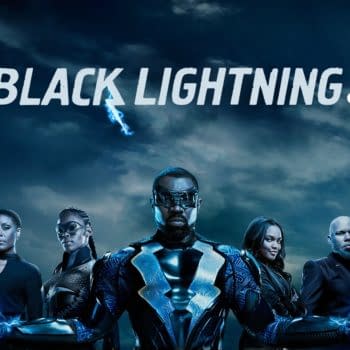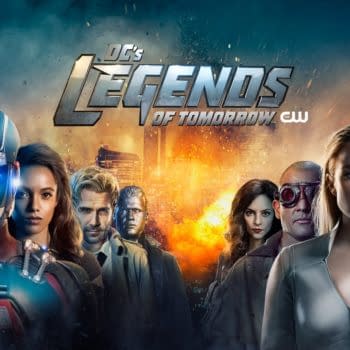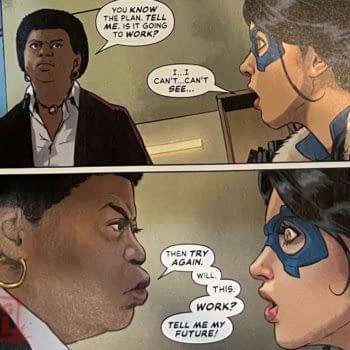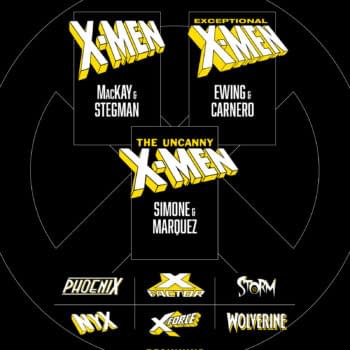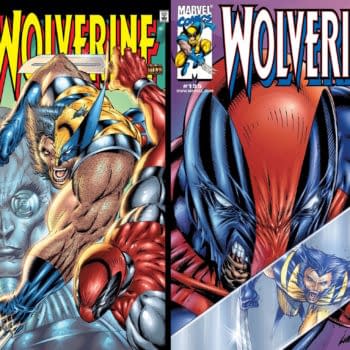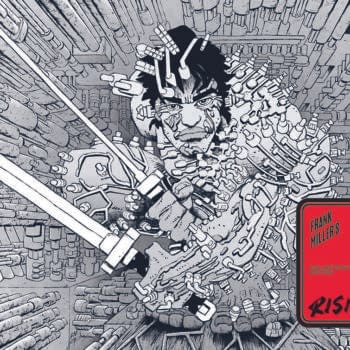Posted in: Comics | Tagged: Blood Queen Vs Dracula, Comics, dynamite, entertainment, Kewbar Baal, Troy Brownfield
The Blood Queen Takes On The Prince Of Darkness And Troy Brownfield Talks About It
Dynamite recently announced a new miniseries for their character, the Blood Queen, based on the real life Elizabeth Bathory and the first vampire Dracula. Byron Brewer caught up with series writer Troy Brownfield to talk about mixing his Blood Countess with Bran Stoker's legendary character.

TROY BROWNFIELD: Elizabeth Bathory is known in popular history as the "Blood Countess". In the 1500s, she was convicted of being responsible for the murders of over 600 people. Legend had it that she bathed in the blood of virgins to retain her youth. Granted, some scholars argue with that, but the myth is so much bigger. After her trial, she was locked in a tower for the rest of her life. Bathory has been featured in films (like Hammer's 1971 Countess Dracula with Ingrid Pitt), novels, songs (like "Bathory" by Ghost, aka Ghost B.C. in the U.S.) and more.
Dynamite's Blood Queen took the general notion of the Bathory story and infused it with a the question of "what makes a wicked queen"? We did six issues and an Annual, and we think they're pretty great. Hit your retailer or Comixology if you're interested.
BB: Come to think of it, I think fans might be interested in YOUR perceptions of the Transylvanian count since there are so many iterations out there (including those in your Dynamite novel, Prince Dracula). Who is Dracula and what does he represent, in your view?

My take on Dracula is that, at this point in the story, he's comfortable with his power and that he's intent on using it to turn back the Ottoman advance. This connects with who Vlad Tepes was historically, and it's something that I touched on in the novel as well. I will go on record to say that the comic Dracula is a distinct version from the novel, but if you want your head canon to say that they're the same, I won't stop you.
BB: Can you tell us a little about what brings Liz and Vlad into conflict here?
TB: The story takes place about two years after Blood Queen #6. Elizabeth is consolidating power. During that time, Dracula has been traveling and creating havoc among the Ottoman Empire. He can't strike directly at the heart of the Empire for reasons explained in the story. But he's a giant (don't do it. YES. Do it. Sigh) pain in the neck for their efforts in Transylvania and Hungary. Returning home for the first time in months, Dracula hears about this Blood Queen and decides to see this new power for himself. As a certain news anchor might say, it escalates quickly.
BB: Just from the solicits, it seems there may be a dark, underlying force of evil bigger than both Drac and Liz. Care to comment?
TB: There may be a dark, underlying force of evil bigger than both Drac and Liz. Or maybe not so evil when you think about it. For all the romantic notions and sympathy we may apply to either character in fiction, they just aren't good people. Elizabeth more or less shed her humanity in the pursuit of power and revenge. Dracula literally isn't human by this point. However, I do find Dracula's motivations to be a little closer to those of a traditional protagonist in that he really wants to protect his homeland. His personal pitfall is probably that he enjoys his role of seducer too much, and that carries him into villainy.
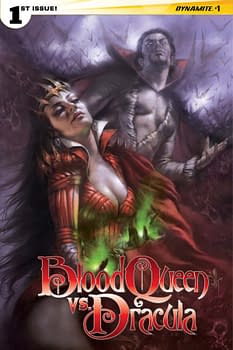
TB: Kewber Baal is awesome, period. It's sort of cliché to talk about how the artist improves your words or how dynamic their scene constructions are, but it's so true. He had great designs out of the gate and he's nailed several key sequences. We've chatted online about different aspects of the story. I tried to be particular about the historical era and make sure that we were true to armor styles, weapons, etc. and he's really taken that to heart. I'd seen his work on Jennifer Blood and more, so I was excited when (editor) Molly Mahan told me we could get him. The pages coming back have been great; I can't wait to see more.
BB: While there was bloodshed in Blood Queen, I always thought of her book as a fairy tale taken to the extreme rather than horror, whereas Dracula is usually nothing but horror and very little fairy tale. Tough making these two characters "jibe"?
TB: I wanted to find a common place for them to meet, and the unifying element really is the ongoing Ottoman conflict. Bathory lived around 140 years after the historical Vlad died. But the threat of that Empire to the region still persisted. It would make sense that she would be trying to hold her lands, it would make sense that Dracula would investigate her, and it would make huge sense that there would be vendetta on the other side. The only "lifting" was to integrate a bit more of Elizabeth's world into Dracula's world, and I think it works in the sense that it's really all fantasy horror. We would still be almost 300 years out from Mr. Dracula Goes to London, and only a few decades past the Middle Ages. I think readers will understand that and just read it for what it is: a clash between two powerful characters with occasionally similar motivations. Sparks and blood, man. Sparks and blood.
For more on Blood Queen Vs Dracula, click here.






